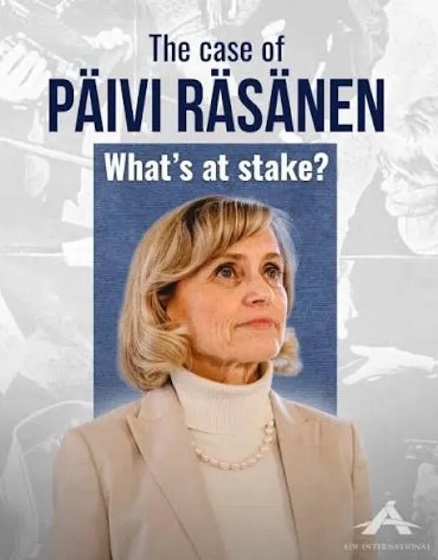COVID-19
You don’t have to be afraid but you have to stay at home – From the front line in Italy

Dr. Daniele Maccini is a doctor on the front line of Italy’s fight against coronavirus
This is from his Facebook post from late February which is just as COVID-19 began to devastate Italy’s health care system. It has been translated from Italian.
Good morning everyone. For various reasons it’s been a lot since I posted on Facebook. But today I think it is useful to spend a page to share and ask you to share the words of a fellow common sense reanimator who in my opinion has been able to summarize a message that I would like to be transposed by everyone, regarding what is happening about the epidemic from Coronavirus Covid 19.
Therefore I quote:
” Coronavirus: we explain why you don’t have to be afraid but you have to stay at home.
I’m a CPR doctor and this is why I allow myself to explain why the State is making such drastic decisions.
The problem with Coronavirus is not its gravity, since it is only 10, or maybe 20 times more serious than the flu. Why is it more serious than flu?
It’s different, so we’re not very used to it;
Elders are not vaccinated.
So who is more at risk? The elders. As usual. Children much less, no serious paediatric cases are reported for the time being.
So why do we worry so much? Because it is MUCH MORE INFECTIVE than the flu, that means it is transmitted with enormous ease.
At this point let’s do some calculations so we can better understand what the problem is.
The Influence
As a rule, flu hits over a season, let’s assume in 5 months, about 10 % of the population. So it hits around 5 million Italians in the span of 30*5 = 150 days. Mortality is 0,1 %, so we have about 5000 deaths (almost all elderly) every year in 150 days. For each dead, we suppose we have about 4-5 patients in CPR, to keep us wide, and everyone should be put into ICU. We then put 25.000 people in ICU in 150 days, with an average inpatient of 7 days, which means 1000-2000 patients a day in ICU in Italy during the winter.
Let’s summarize:
Infectivity: 10 % potential (real data) = 50 million * 10 % = 5 million infected, many of them unaware.
Mortality: 0,1 % estimated = 5000 people in 150 days.
Critics: 5*0,1 % = 25.000 people in 150 days. so about 1000-2000 people in ICU a day due to flu.
The beds in ICU are for the province of Venice, where I live, about 60 out of 1 million inhabitants, so it could be about 4000 across Italy. This means that at worst case scenario patients with flu and its complications, i.e. pneumonia, occupy between 25 % and 50 % at maximum intensive therapies in Italy at peak.
The Coronavirus
Let’s see now what can happen with the Coronavirus. Let’s remember that the big difference is that Coronavirus is extremely more infectious and could infect us, instead of in 150 days, in 30-60 days. Suppose 60 days. Let’s remember that it can affect up to 60 % of the population, estimated data, so let’s do some calculations:
Infectivity: 60 % potential (estimated data) = 50 million * 60 % = 30 million infected, of which the vast majority unaware.
mortality: 1-2 % estimated = between 500.000 and 1.000.000 million people.
Critics: 5 % = 1.500.000 people in 60 days. so about 300.000 people in ICU.
But we only have 4000 beds! How can we put 300.000 people in ICU when we only have 4000 beds?
NOW YOU UNDERSTAND WHY YOU NEED TO BE HOME?
If you stay home, people get infected little by bit. Many don’t notice. The others, especially the elderly, but also some young people, we doctors and nurses take them, put them in ICU, treat them and return them to you. A little bit at a time.
If everyone leaves the house, the risk is that they will all get infected together and that we cannot manage them, with an important increase in mortality.
YOU DON ‘ T HAVE TO PANIC BUT TAKE IT SERIOUSLY. STAY HOME.
And above all, let me add, don’t come to the ER for futile reasons. We always say it but this time it’s even more important.”
So don’t be scared: each of you who will read this message has a very low probability of having big trouble from this infection, but try to behave so as to safeguard everyone’s good because there are many people (maybe even your acquaintances) who can instead risk a lot.
My endless date with self-isolation has led to some sobering realizations
COVID-19
Judge denies Canadian gov’t request to take away Freedom Convoy leader’s truck

From LifeSiteNews
A judge ruled that the Ontario Court of Justice is already ‘satisfied’ with Chris Barber’s sentence and taking away his very livelihood would be ‘disproportionate.’
A Canadian judge has dismissed a demand from Canadian government lawyers to seize Freedom Convoy leader Chris Barber’s “Big Red” semi-truck.
On Friday, Ontario Court of Justice Judge Heather Perkins-McVey denied the Crown’s application seeking to forfeit Barber’s truck.
She ruled that the court is already “satisfied” with Barber’s sentence and taking away his very livelihood would be “disproportionate.”
“This truck is my livelihood,” said Barber in a press release sent to LifeSiteNews.
“Trying to permanently seize it for peacefully protesting was wrong, and I’m relieved the court refused to allow that to happen,” he added.
Criminal defense lawyer Marwa Racha Younes was welcoming of the ruling as well, stating, “We find it was the right decision in the circumstances and are happy with the outcome.”
John Carpay, president of the Justice Centre for Constitutional Freedoms (JCCF), said the decision is “good news for all Canadians who cherish their Charter freedom to assemble peacefully.”
READ: Freedom Convoy protester appeals after judge dismissed challenge to frozen bank accounts
“Asset forfeiture is an extraordinary power, and it must not be used to punish Canadians for participating in peaceful protest,” he added in the press release.
As reported recently by LifeSiteNews, the Canadian government claimed that Barber’s truck is an “offence-related property” relating to his involvement in the 2022 protests against Canada’s COVID mandates.
At this time, the court ruling ends any forfeiture proceedings for the time being, however Barber will continue to try and appeal his criminal conviction and house arrest sentence.
Barber’s truck, a 2004 Kenworth long-haul he uses for business, was a focal point in the 2022 protests. He drove it to Ottawa, where it was parked for an extended period of time, but he complied when officials asked him to move it.
On October 7, 2025, after a long trial, Ontario Court Justice Perkins-McVey sentenced Barber and Tamara Lich, the other Freedom Convoy leader, to 18 months’ house arrest. They had been declared guilty of mischief for their roles as leaders of the 2022 protest against COVID mandates, and as social media influencers.
Lich and Barber have filed appeals of their own against their house arrest sentences, arguing that the trial judge did not correctly apply the law on their mischief charges.
Government lawyers for the Crown have filed an appeal of the acquittals of Lich and Barber on intimidation charges.
The pair’s convictions came after a nearly two-year trial despite the nonviolent nature of the popular movement.
COVID-19
Freedom Convoy protester appeals after judge dismissed challenge to frozen bank accounts

From LifeSiteNews
Protestor Evan Blackman’s legal team argues Trudeau’s Emergencies Act-based bank account freezes were punitive state action tied directly to protest participation.
A Freedom Convoy protester whose bank accounts were frozen by the Canadian government says a judge erred after his ruling did not consider the fact that the funds were frozen under the Emergencies Act, as grounds for a stay of proceedings.
In a press release sent out earlier this week, the Justice Centre for Constitutional Freedoms (JCCF) said that Freedom Convoy protestor Evan Blackman will challenge a court ruling in his criminal case via an appeal with the Ontario Superior Court of Justice.
“This case raises serious questions about how peaceful protest is treated in Canada and about the lasting consequences of the federal government’s unlawful use of the Emergencies Act,” noted constitutional lawyer Chris Fleury. “The freezing of protestors’ bank accounts was part of a coordinated effort to suppress dissent, and courts ought to be willing to scrutinize that conduct.”
Blackman was arrested on February 18, 2022, during the police crackdown on Freedom Convoy protests against COVID restrictions, which was authorized by the Emergencies Act (EA). The EA was put in place by former Prime Minister Justin Trudeau’s Liberal government, which claimed the protests were violent, despite no evidence that this was the case.
Blackman’s three bank accounts with TD Bank were frozen due to his participation in the Freedom Convoy, following a directive ordered by Trudeau.
As reported by LifeSiteNews, in November of this year, Blackman was convicted at his retrial even though he had been acquitted at his original trial. In 2023, Blackman’s “mischief” and “obstructing police” charges were dismissed by a judge due to lack of evidence and the “poor memory of a cop regarding key details of the alleged criminal offences.”
His retrial resulted in Blackman getting a conditional discharge along with 12 months’ probation and 122 hours of community service, along with a $200 victim fine surcharge.
After this, Blackman’s application for a stay of proceedings was dismissed by the court. He had hoped to have his stay of proceedings, under section 24(1) of the Charter of Rights and Freedoms, allowed. However, the judge ruled that the freezing of his bank accounts was legally not related to his arrest, and because of this, the stay of proceedings lacked standing.
The JCCF disagreed with this ruling, noting, it “stands in contrast to a Federal Court decision finding that the government’s invocation of the Emergencies Act was unreasonable and violated Canadians’ Charter rights, including those targeted by the financial measures used against Freedom Convoy protestors.”
As of press time, a hearing date has not been scheduled.
In 2024, Federal Court Justice Richard Mosley ruled that Trudeau was “not justified” in invoking the Emergencies Act.
In early 2022, the Freedom Convoy saw thousands of Canadians from coast to coast come to Ottawa to demand an end to COVID mandates in all forms. Despite the peaceful nature of the protest, Trudeau’s federal government enacted the EA in mid-February.
After the protesters were cleared out, which was achieved through the freezing of bank accounts of those involved without a court order as well as the physical removal and arrest of demonstrators, Trudeau revoked the EA on February 23, 2022.
-

 Health1 day ago
Health1 day agoFDA warns ‘breast binder’ manufacturers to stop marketing to gender-confused girls
-

 Daily Caller1 day ago
Daily Caller1 day agoTrump Reportedly Escalates Pressure On Venezuela With Another Oil Tanker Seizure
-

 espionage2 days ago
espionage2 days agoCarney Floor Crossing Raises Counterintelligence Questions aimed at China, Former Senior Mountie Argues
-

 Business18 hours ago
Business18 hours agoThere’s No Bias at CBC News, You Say? Well, OK…
-

 Business2 days ago
Business2 days agoTaxing food is like slapping a surcharge on hunger. It needs to end
-

 Energy2 days ago
Energy2 days ago75 per cent of Canadians support the construction of new pipelines to the East Coast and British Columbia
-

 Health1 day ago
Health1 day agoAll 12 Vaccinated vs. Unvaccinated Studies Found the Same Thing: Unvaccinated Children Are Far Healthier
-

 Opinion15 hours ago
Opinion15 hours agoReligion on trial: what could happen if Canada passes its new hate speech legislation




